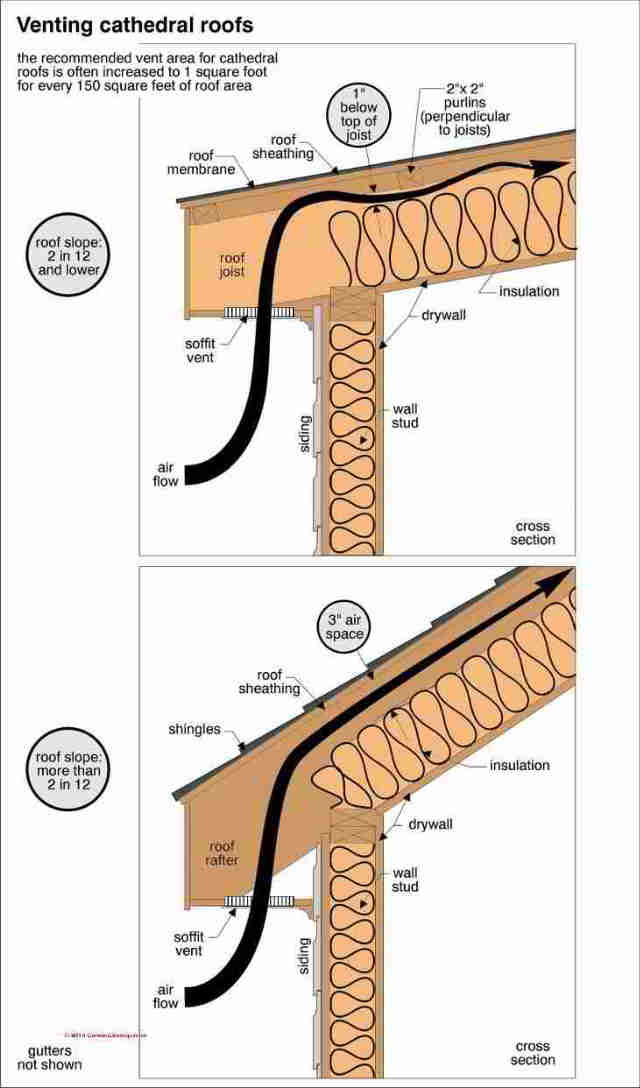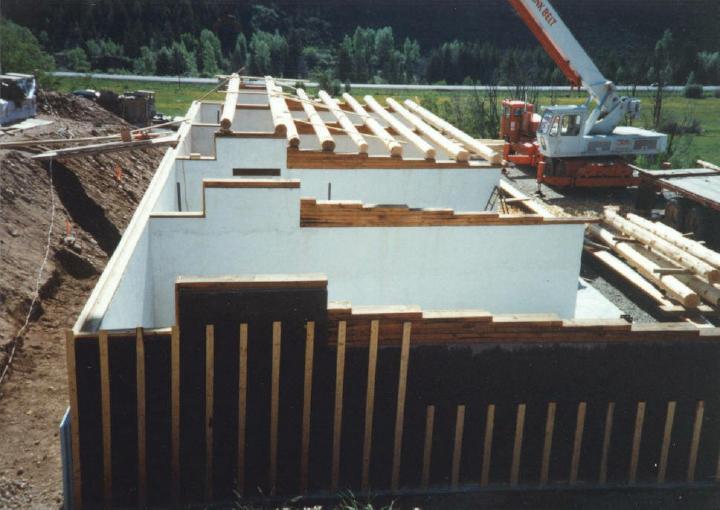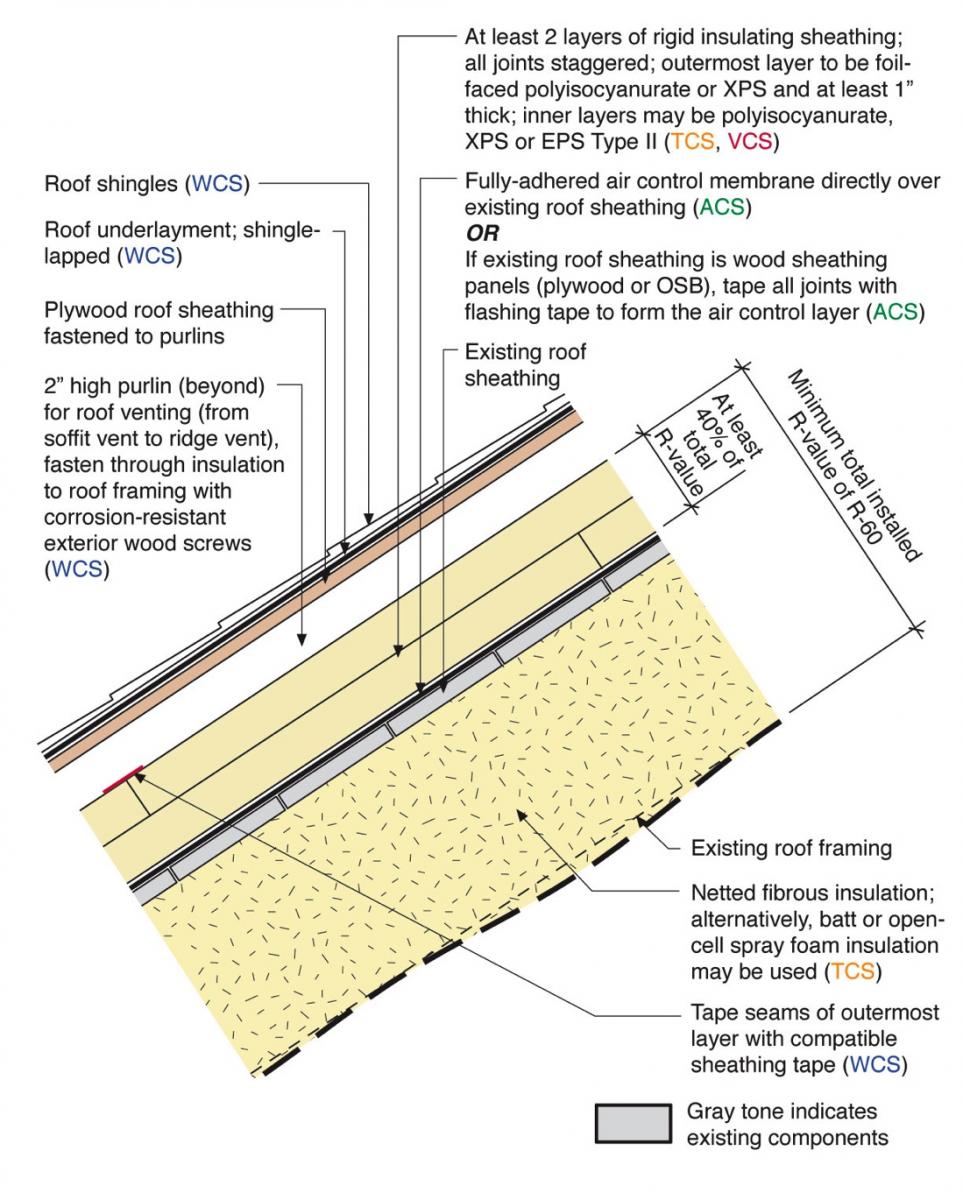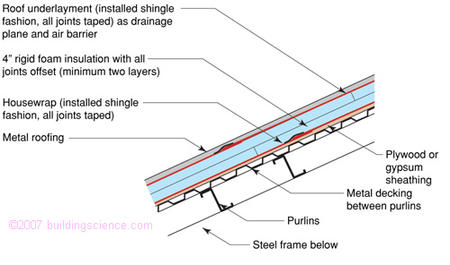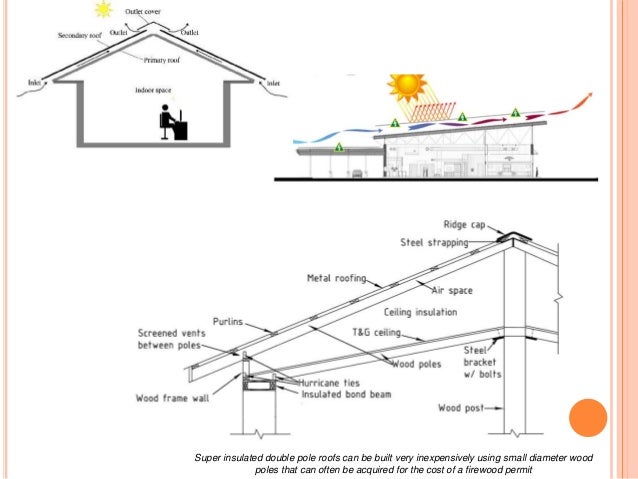But a purlin is applied directly onto the roof rafters running perpendicular between them while a batten is nailed to roof sheathing or applied over an existing roof for installation of a new roof.
Roof purlin air gap.
Ventilation air follows exactly the opposite path.
An unvented roof assembly is possible only if you keep the roof sheathing warm enough to prevent conditioned air from condensing against it.
Insert two equally spaced nails into the rafter.
Fasten the purlin with 16d common nails into each vertical rafter.
The map at right which is based on table r806 4 of the irc lists the minimum r values required to prevent condensation in unvented assemblies in various climate zones.
If you do not completely fill purlin cavities code requires airflow from eave to ridge over top of the insulation.
Lay the first purlin at the ridge of the roof down to the chalk line beginning at either corner.
Placing batts between purlins is probably not a top twenty best answer for several reasons.
Rising along the underside of the angled purlin until it reaches a gap then rising up to the next purlin and so on to exit at the ridge or gable.
Numbers 20 and 22 u s.
Snap a chalk line horizontally across the roof two feet down from the top.
But probably the best benefit that comes from using purlins is the air gap it creates between the metal roof and the existing shingle roof.
The spacing of purlins on roofs and girts on wall is usually 4 to 6 ft.
Purlins at a 45 degree angle still provide sufficient support for installation of the metal roof panels.
The air gap that battens create between the roof sheathing.
Load tables specifying safe loads for different spans are available from metal deck manufacturers.









